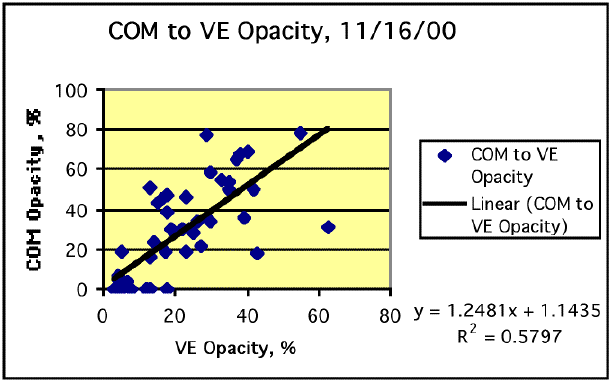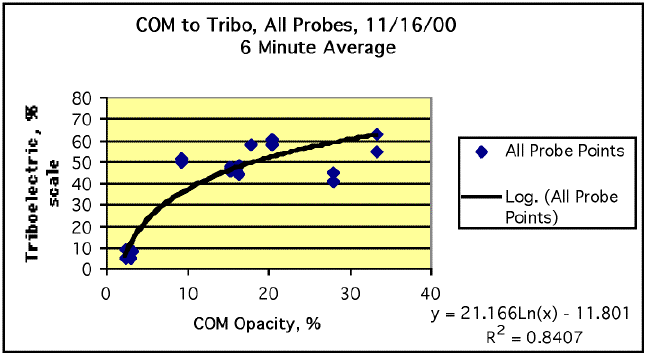




| Normal Operating Range: | 0% to 49% |
| Caution Range: | 50% to 69% |
| Alarm Range: | > 70% |
| Probe B-2 | y = 1.479x + 18.723 |
| Probe A-2 | y = 1.562 x + 14.806 |
| Probe B-1 | y = 1.0083 x + 31.33 |
| Probe A-1 | y = 0.71393 x + 31.735 |
| Where: | x = COM opacity, % |
| y = Triboelectric signal, % of scale |
| Probes Groups: | A-1, B-1 | A-2, B-2 |
| Normal Operating Range: | 0% to 29% | 0% to 24% |
| Caution Range: | 30% to 37% | 25% to 29% |
| Alarm Range: | > 38% | > 30% |

